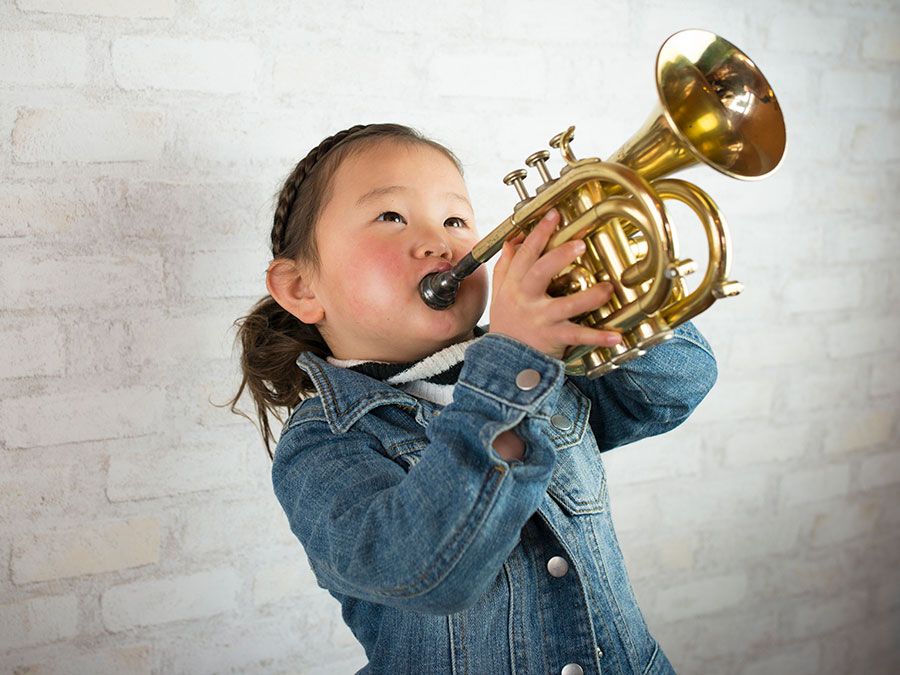lied
- Plural:
- Lieder
lied, any of a number of particular types of German song, as they are referred to in English and French writings. The earliest so-called lieder date from the 12th and 13th centuries and are the works of minnesingers, poets and singers of courtly love (Minne). Many surviving Minnelieder reflect southern German origins and are written in a group of manuscripts of somewhat later date. These songs occur in a number of forms based on poetic models. The lied proper, like many other forms, commonly comprises two sections, the first phrase of music (a) repeated with different words, and the second phrase (B), again with different words aaB. This is the Bar form much favoured by German composers and often expanded in various ways.
The monophonic (single melodic line) Minnelieder are virile, abounding in small leaps; they are attractively contoured and make use of modal scales (melodic patterns characteristic of medieval and Renaissance music until the advent of the major–minor scale system). Because musical notation of this period is not precise regarding rhythmic values, the rhythmic interpretation of Minnelieder is controversial. Among important minnesingers (some of the lesser nobility) are Walther von der Vogelweide, Tannhäuser, Wolfram von Eschenbach, and Neidhart von Reuenthal, the first three known today through the operas of Richard Wagner.
The 14th century brought a decline of the monophonic lied and the introduction of polyphonic lieder for two or more voices or voice and instruments. One of the most popular polyphonic lieder is the two-voice “Wach auff myn Hort” (“Awake, my darling”) by Oswald of Wolkenstein (1377–1455).

The 15th century saw a flowering of polyphonic lieder for as many as four voices singing together. These polyphonic settings, unlike the courtly Minnelieder, are addressed to educated scholars and clergy as well as nobles. Bar form and romantic texts predominate, and through-composed pieces (i.e., devoid of sectional repetition) occur. The tunes are usually sung by the middle part (tenor); often the parts accompanying the tenor are played on instruments. The tenor melody is often a preexistent, familiar one, not a tune newly composed for the polyphonic lied. Franco-Flemish influences appear in the relations among the parts (usually three); sometimes the texture is chordal, otherwise one part may imitate the melody of another voice for part of a phrase. When three parts are present, whether sung or played and sung, the tenor and top part (descant) form a harmonic unity, while the third part (countertenor) skips between and below the other two.
Polyphonic lieder reached a climax in the mid-16th century with the songs of Ludwig Senfl and his contemporaries. The invention of printing helped disseminate the secular polyphonic lieder, and many of the most popular ones were turned into sacred pieces by simply substituting a new text. Thus lieder became important vehicles for spreading Protestantism. By the late Renaissance (c. 1580), lieder were composed deliberately in an Italian style: textures often chordal, phrases of regular length and well-articulated, melodies in the top part with the words carefully declaimed. Under the influence of the new madrigal (a polyphonic Italian secular form), the old lied tradition decayed.
The 19th century saw German composers again turning to lied production. Late 18th- and early 19th-century Romanticism gave great impetus to serious popular poetry, and many poems of such masters as Goethe were set by lied composers. Franz Schubert, who composed more than 600 lieder, Robert Schumann, Johannes Brahms, and Hugo Wolf are among the finest 19th-century lied composers. Although the verse in lieder often was mediocre, for the Romantics, poetry and music were of equal importance. Romantic lieder are generally for a solo voice with piano accompaniment, which often required a virtuoso technique. The songs were primarily salon music: individual lieder lack the scope of contemporary opera arias, but are more intimate and emotionally refined. Composers often wrote cycles of lieder, all related by a single topic but giving scope for considerable musical development. A lied may be either through-composed or strophic, i.e., repeating the music for each new stanza of the poem. Occasionally lieder are arranged for accompaniment by full orchestra or, in the case of several lied cycles, for chamber ensemble of reduced strings and winds.










